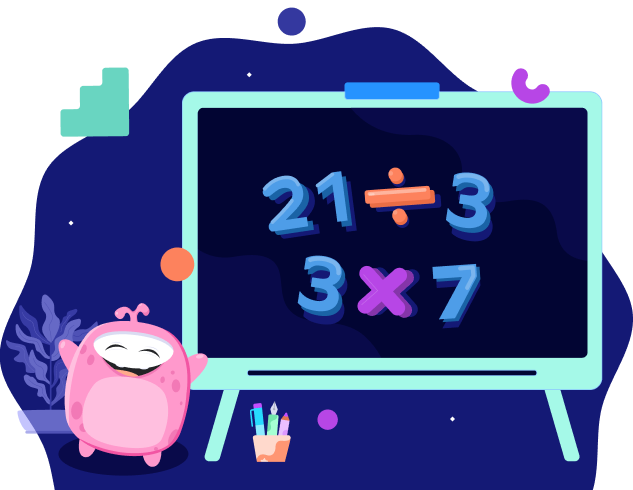- Parents
- Educators
- Math Games
- Reading Games
- PreK-5 Games
Watch your child become a fearless learner with our game-based online learning program scientifically designed for pre-k to grade 5 kids.
Kickstart your child's journey to success.
Encourage your child to learn from a variety of fun exercises.
Since my son has started using this App, he's been having so much fun and excelling at his math tests at school. This App is easy and fun. I highly recommend it!
Nico Robert
Parent of 2nd Grader
It’s such a fun way to get kids excited about learning. The cool thing is that you can add multiple kids and keep a track of their progress through the parent app.
April Bayot
Parent of 1st, 3rd and 4th Grader
My son has struggled with math but didn’t want to practice. Both of us love SplashLearn because it has guided lessons and tons of fun games. It tricks him into practicing his math facts, which led to him liking math from higher grades!
Amy Jay
Parent of 4th Grader
Jump into the Splashverse, where fun and learning never end.
SplashLearn is an award-winning learning program that uses games and activities to engage kids in grades PreK- 5.
SplashLearn provides the perfect balance of fun and learning that builds math and reading skills in children. Over 40 million kids globally love SplashLearn.
SplashLearn offers a curriculum-aligned and personalized learning experience for kids in Pre-Kindergarten to Grade 5.
SplashLearn covers PreK to Grade 5 Math and Reading with 4,000+ learning games and educational activities.
SplashLearn is compatible with desktop, tablets, and smartphones.
SplashLearn provides an out-of-the-box learning experience that builds math and reading skills and boosts confidence in children—making them independent learners.
SplashLearn follows the Common Core curriculum for all of its learning content.
We give utmost importance to your child's safety and privacy. We do not collect personal information and ensure a child-friendly and ad-free learning experience.
If you are a parent, you can get started by clicking on the Signup button. If you are a teacher and want to use SplashLearn for your classes, please click on the same Signup button to continue.
Multiplication facts are very helpful in learning times tables. Kids can learn multiplications facts of numbers upto 10 to learn times tables easily. You can also explore multiplication games and times table games on SplashLearn and let your child learn and apply times tables in a fun manner.
Multiplication is the repeated addition of equal groups. When you multiply two numbers x and y, you can think of it as repeatedly adding groups of x objects y number of times or vice versa. It is one of the four basic mathematical operations.
The kids need to understand how to perform addition and be comfortable adding two numbers before introducing multiplication.
Multiplication is one of the foundational mathematical operations that kids will need to use in their day-to-day life when they grow up. It helps them understand numbers better and is also the basis for many other concepts they learn in the higher grades, such as division, LCM, fractions, etc.
Multiplication means repeated addition. It gives the result of combining groups of equal sizes. For instance- Take the numbers 4 and 3. Multiplying them gives us: 4x3 = 12. It may seem simple enough for adults, but helping kids reach that level of comfort with multiplication is important.
Ensuring that they have a good introduction to multiplication that helps them understand the concept rather than intimidate them is crucial to ensure that kids don't grow up hating mathematics.
Learning all the multiplication tables by rote was how multiplication might have been introduced to you. However, rote learning is a tiresome endeavor that can make something as interesting as multiplication seem boring.
Interactive and educational online multiplication games such as the ones mentioned below can make multiplication simple and easy to understand for your child.
Journey: Journey helps kids understand how grouping numbers work and how they can express multiplication by grouping objects. It gives them a sense of what multiplication is all about.
Sky Lands: Sky land is another great interactive game to introduce multiplication to kids. Rather than showing the multiplication table, this educational online game asks kids to pick the next number in the multiplication table to help the character cross the valley.
Wilda's Wonders: The game asks kids to helps Wilda, the witch, brew wonderful potions. They will have to drag the correctly numbered ingredient to the pot the specified number of times. It reinforces the basic concept that multiplication is the repeated addition of numbers.
Repeated Addition With Equal Groups: This fun online game shows the objects in a group and asks them to select the product of multiplication.
Kids often struggle with learning multiplication because they are shown the multiplication tables straight away without having a good understanding of multiplication relates to addition. The kids end up thinking of multiplication as something they have to learn by heart, making it seem like a chore.
Another common reason for kids struggling with multiplication is that they are not fluent and confident in addition and number lines when introduced to multiplication. Without the right foundation, multiplication starts to look more challenging than it actually is.
As parents, it is hard to watch your kids struggle with something. Understandably, you want to do everything in your power to help them. You can try modeling multiplication while putting away fruits or vegetables in the fridge or while folding laundry. You can also use multiplication songs that take the boredom away from learning multiplication tables.
Online multiplication games such as the ones from SplashLearn are the best way to introduce your kids to new mathematical concepts such as multiplication properties and multiplication facts. These curriculum-oriented multiplication games follow common core standards, making any concept enjoyable and pique their interest in learning.

